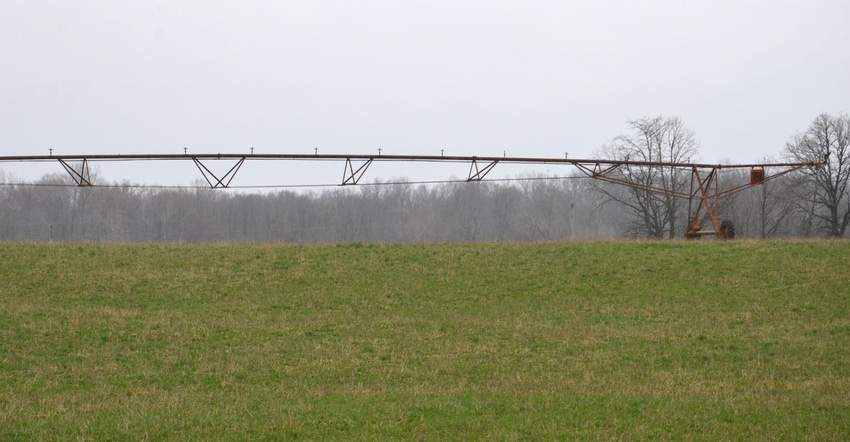May 1, 2021

Each drop of irrigation water costs money. Do you want to spend money on irrigation water only to see it run off your field? An inch of irrigation water goes on faster than most rains. But what can be done to address runoff and improve efficiency in your irrigation system?
Runoff is just a symptom of the problem, which is poor water infiltration into your soils. The solution is to improve infiltration and soil’s water-holding capacity.
Soil organic matter matters. Increasing soil organic matter with cover crops and less tillage will improve water infiltration and water-holding capacity. Every percent of soil organic matter in the top 6 inches of soil has the potential to hold thousands of gallons of water per acre.
What would an additional 1% soil organic matter mean to your crop and late-season water needs? With increased extreme weather events, it means water is stored for future use instead of running off.
Irrigation water is also lost through evaporation. A wide variety of drop nozzles and high-efficiency nozzles can be used to reduce evaporation loss. The use of high-residue cropping systems utilizing no-till, strip till and cover crops will keep the soil surface covered, protecting it from evapotranspiration, improving infiltration and leaving more water for your cash crop to utilize.
Improve water use efficiency
One tool to help determinate water-use efficiency is a uniformity test, which shows where too little or too much water is applied during irrigation. Testing is accomplished by placing catch cans at specific distances under the whole system and running the system for a specified time to see how much water was applied.
It’s possible for some parts of the system to under-apply by 20%, while some parts over-apply by 20% — a 40% swing from the planned application rate.
Another device for your irrigation toolbox is a soil moisture probe, which can be used to help schedule applications based on current field conditions. It can also measure whether you’re getting the intended amount of water to the root zone.
These probes can provide real-time data that is accessible from your smartphone, tablet or computer, allowing you to monitor irrigation systems without a field visit. There are different types of probes, so work with a reputable dealer to find the best probes for your operation and to ensure proper installation and calibration.
During the drought of 2012, the Natural Resources Conservation Service in Indiana worked with a farmer who stated, “We have invested in irrigation over the years to prepare for summers like 2012. In a field that had not yet been converted to no-till and cover crops, we could only apply a half-inch of water before it began to run off. Where we had three years of no-till and two years of cover crops, we could put over 2 inches of water on without runoff … that field made 230 bushels per acre!”
The impact of improved irrigation efficiency is a positive return on dollars invested not only in an irrigation system, but also a soil health system.
Bailey is the state soil conservationist with the Natural Resources Conservation Service. Donovan is a district conservationist with NRCS. They write on behalf of the Indiana Conservation Partnership.
You May Also Like




